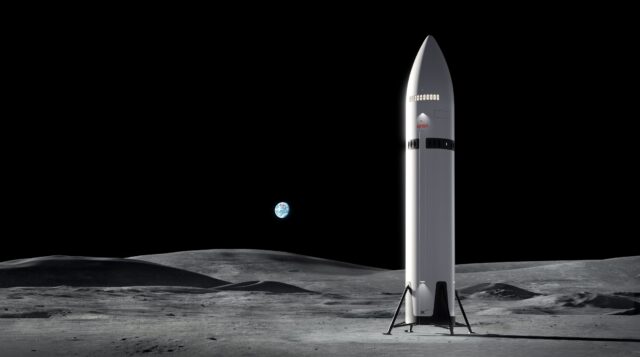That’s when Starship reignited one of its six Raptor engines for a brief burn to make a slight adjustment to its flight path. The burn only lasted a few seconds, and the impulse was small—just a 48 mph (77 km/hour) change in velocity, or delta-V—but it demonstrated the ship can safely deorbit itself on future missions.
With this achievement, Starship will likely soon be cleared to travel into orbit around Earth and deploy Starlink internet satellites or conduct in-space refueling experiments, two of the near-term objectives on SpaceX’s Starship development roadmap.
Launching Starlinks aboard Starship will allow SpaceX to expand the capacity and reach of commercial consumer broadband network, which, in turn, provides revenue for Musk to reinvest into Starship. Orbital refueling is an enabler for Starship voyages beyond low-Earth orbit, fulfilling SpaceX’s multibillion-dollar contract with NASA to provide a human-rated Moon lander for the agency’s Artemis program. Likewise, transferring cryogenic propellants in orbit is a prerequisite for sending Starships to Mars, making real Musk’s dream of creating a settlement on the red planet.
Credit:
SpaceX
Until now, SpaceX has intentionally launched Starships to speeds just shy of the blistering velocities needed to maintain orbit. Engineers wanted to test the Raptor’s ability to reignite in space on the third Starship test flight in March, but the ship lost control of its orientation, and SpaceX canceled the engine firing.
Before going for a full orbital flight, officials needed to confirm Starship could steer itself back into the atmosphere for reentry, ensuring it wouldn’t present any risk to the public with an unguided descent over a populated area. After Tuesday, SpaceX can check this off its to-do list.
“Congrats to SpaceX on Starship’s sixth test flight,” NASA Administrator Bill Nelson posted on X. “Exciting to see the Raptor engine restart in space—major progress towards orbital flight. Starship’s success is Artemis ‘success. Together, we will return humanity to the Moon & set our sights on Mars.”
While it lacks the pizazz of a fiery launch or landing, the engine relight unlocks a new phase of Starship development. SpaceX has now proven the rocket is capable of reaching space with a fair measure of reliability. Next, engineers will fine-tune how to reliably recover the booster and the ship, and learn how to use them.
Acid test
SpaceX appears well on the way to doing this. While SpaceX didn’t catch the Super Heavy booster with the launch tower’s mechanical arms Tuesday, engineers have shown they can do it. The challenge of catching Starship itself back at the launch pad is more daunting. The ship starts its reentry thousands of miles from Starbase, traveling approximately 17,000 mph (27,000 km/hour), and must thread the gap between the tower’s catch arms within a matter of inches.
